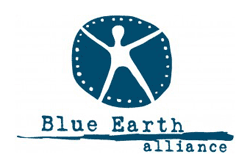
Past Projects
Bridges to Understanding
bridges2understanding.org
BRIDGES — is an online classroom program connecting children from indigenous and tribal cultures with their contemporaries in North America for the purpose of exploring and preserving cultural diversity. The curriculum guides students as they examine their own culture and explore the lives of children with beliefs and customs very different from their own. Central to the program is interactive photographic storytelling mentored by professionals and directed by the students.
We started the Bridges program in 2000 by connecting a middle school classroom on the Navajo Reservation with a middle school classroom in Seattle. Since that time we added schools in Artic Village Alaska, Peru, Guatemala, Cambodia, India, Kenya, South Africa, Lithuania and Azerbaijan. BRIDGES and the Bridges’ curriculum has been adopted by Teachers Without Borders and now resides on their website. teacherswithoutborders.org
In 9 years we led countless workshops in which we paired photographers and writers from North America and Europe with indigenous youth around the world to create digital stories. We asked the youth to pick an issue in their community that they would like to see addressed or changed. The girls in the Tibetan Children’s Village in Dharamsala, India chose to show their efforts to allow girls to play soccer in their school. The students in South Africa chose to address the high rate of teen pregnancy in their township. Here are a few of the movies created by the BRIDGES students.
Blue Earth Alliance
blueearth.org
BLUE EARTH ALLIANCE sponsors photographic projects that educate the public about threatened cultures, endangered environments and social issues.
Through support of Photography that Makes a Difference, Blue Earth has helped raise almost a million dollars for important issues often overlooked by traditional media—The Arctic. Global warming. The loss of open space in Los Angeles. Racism suffered by farmers. Disappearing traditions of New England fishermen. The role of grandmothers in AIDS—ravaged Africa. BEA sponsored projects have been at the forefront of issues affecting contemporary society—John Trotter’s No Agua, No Vida investigates the Southwest’s limited water resources; Perry Dilbeck’s Truck Farmers: The Last Harvest chronicles the loss of independent farming; and Florian Schultz’s Yellowstone to Yukon promotes the unification of animal migration routes and habitats across international borders. Other projects are featured in books such as The Living Wild by Art Wolfe, Arctic National Wildlife Refuge by Subhankar Banerjee, and Life on Earth: A Journey Through Time by Frans Lanting.

